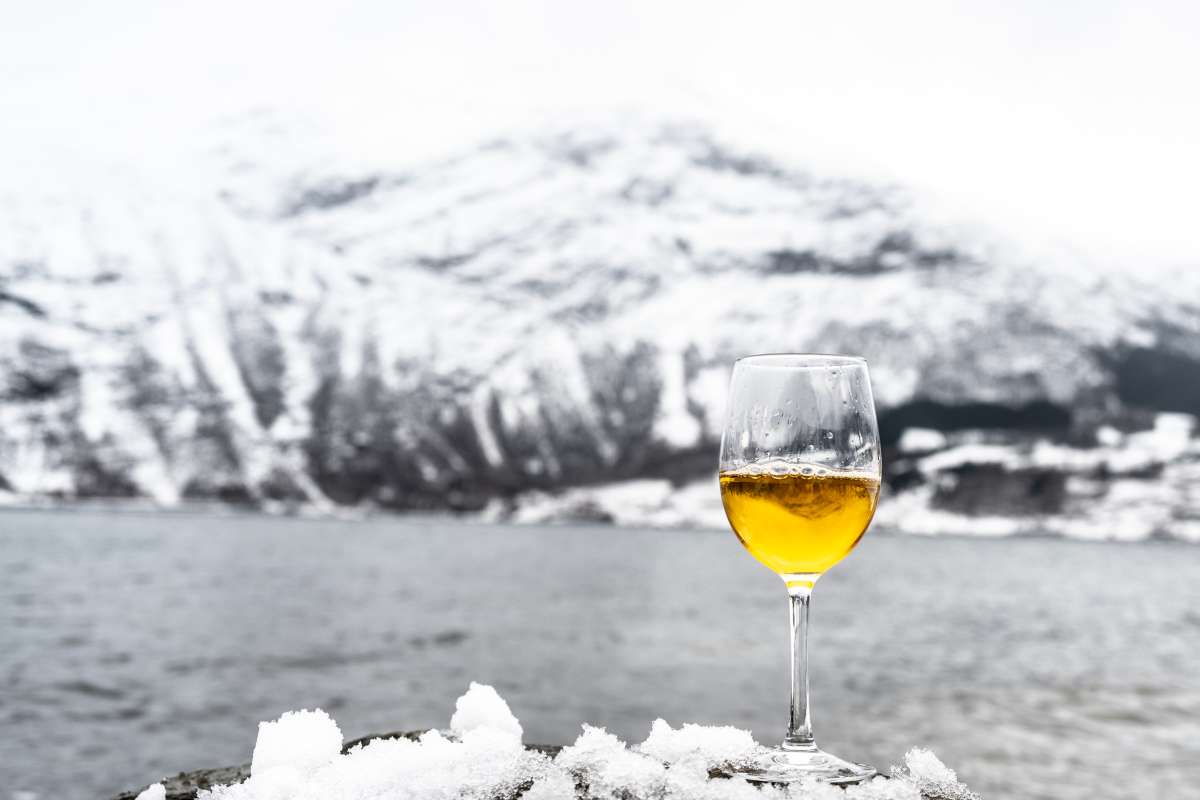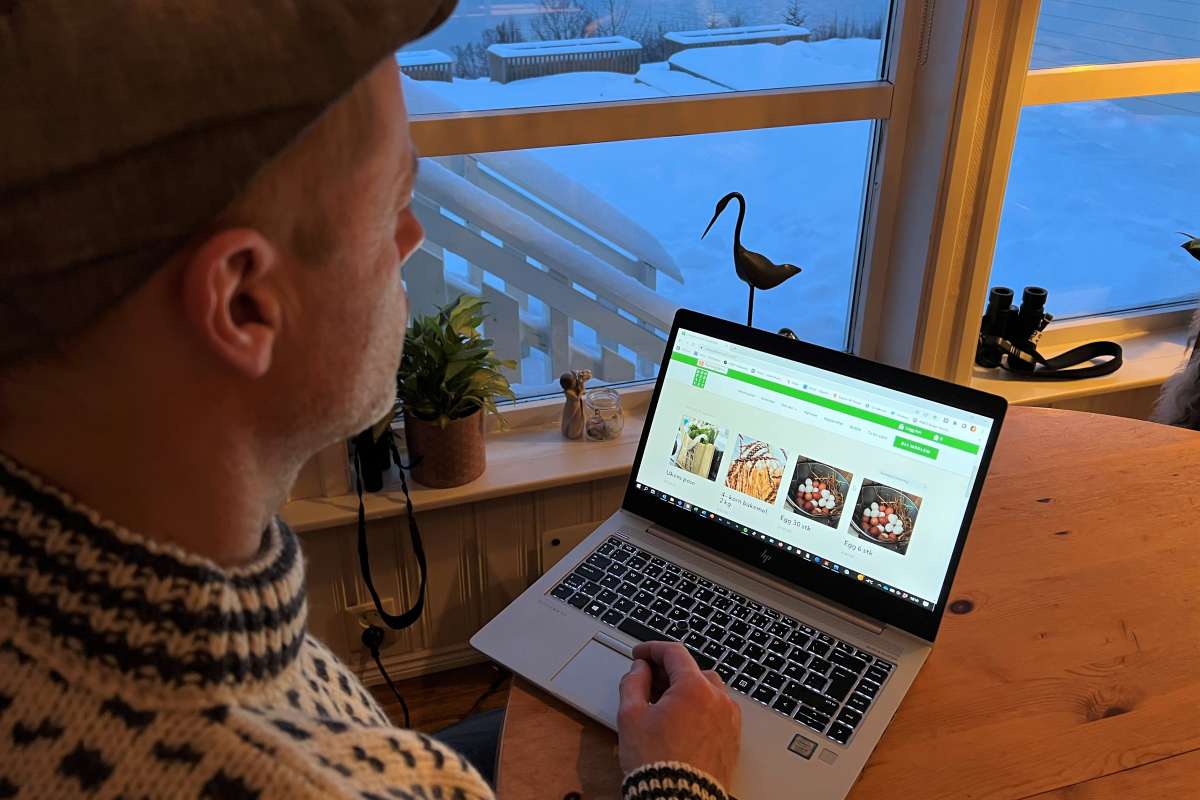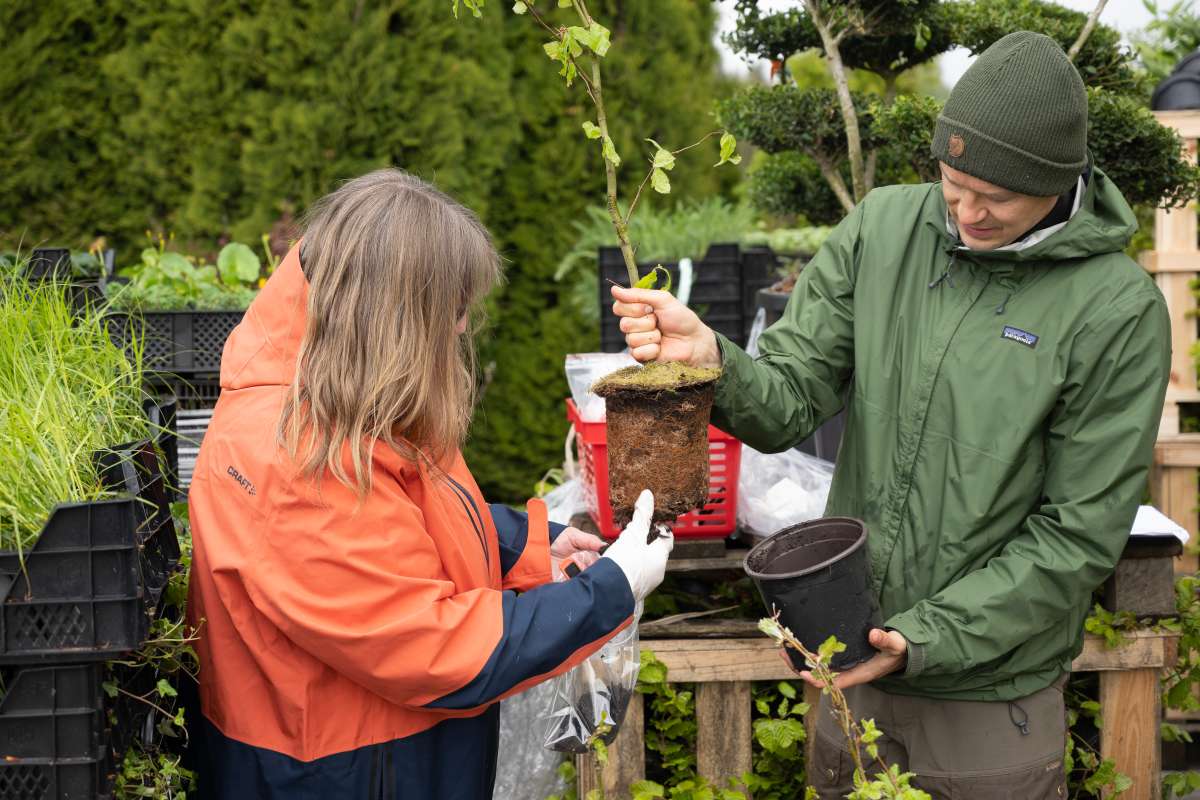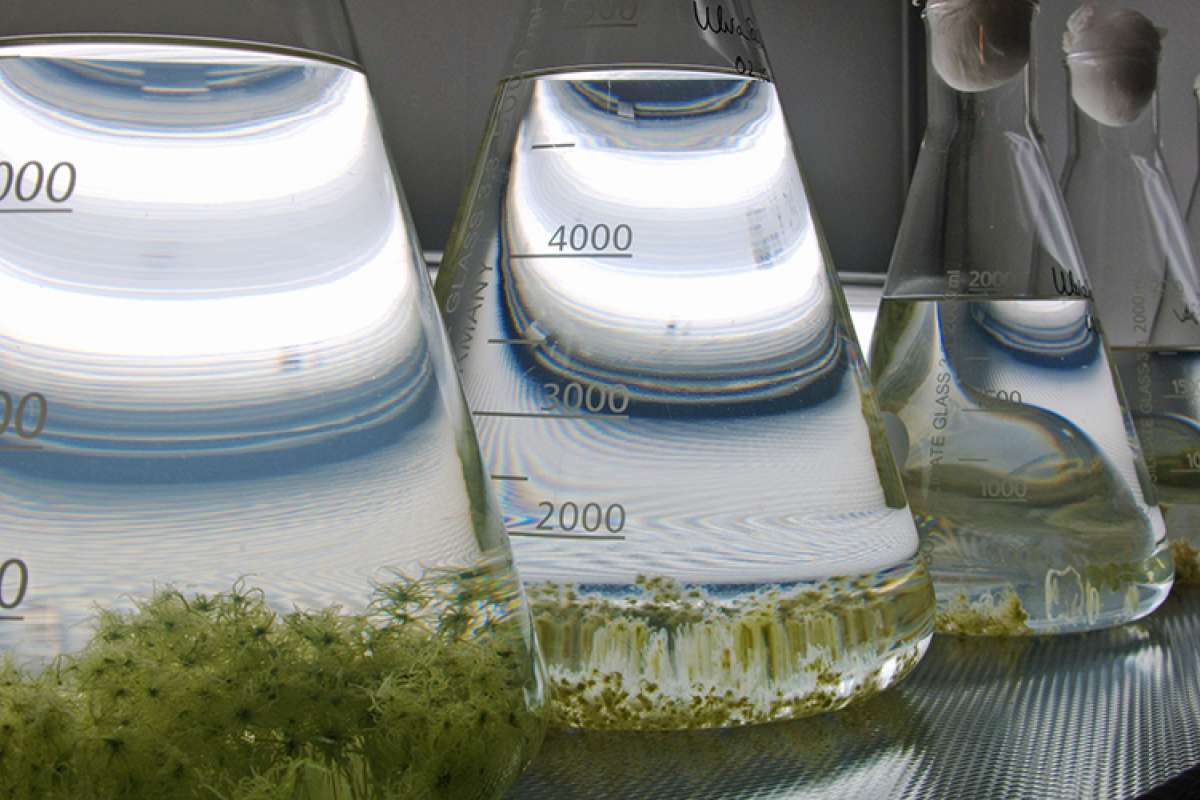How to collect seaweed for the dinner table
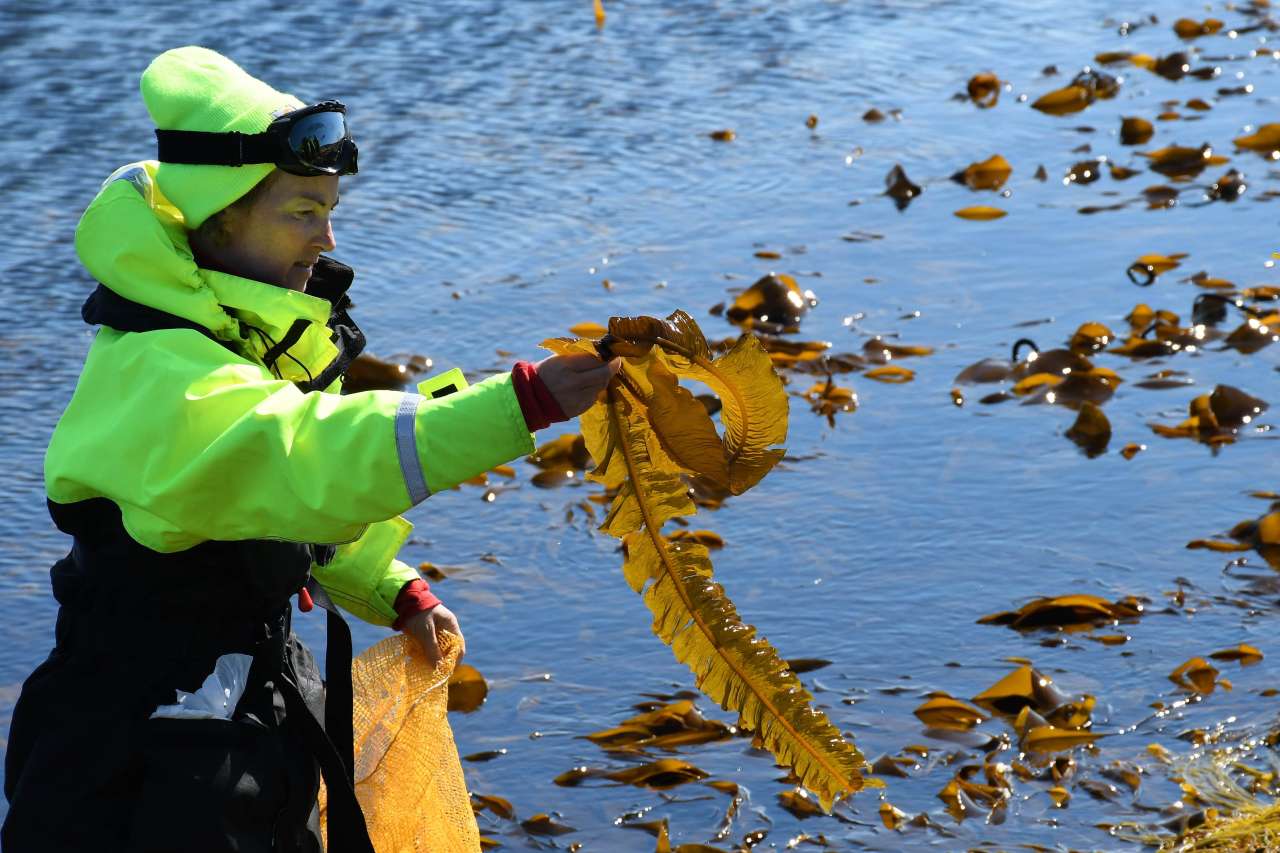
If we are to increase the earth's food security, researchers believe we should make greater use of the marine opportunities. Photo: Liv Jorunn Hind
70% of the earth consists of oceans. Yet only around 2% of the world's food energy comes from the sea. If we are to increase the earth's food security, researchers believe we should make greater use of the marine opportunities. Let’s begin with seaweed, which you can easily collect yourself.
There are around 500 different species of macroalgae in Norwegian waters, and between 10,000 and 20,000 worldwide. Most macroalgae can be divided into three groups based on colour: red algae, green algae, and brown algae.
In the ALGEBRA project, researchers at NIBIO have highlighted the most common macroalgae species found in Norwegian waters.
Growing interest for macroalgae
– We want to convey how edible algae in Norway taste, where they grow and what they look like. This is so that people can recognize them if they want to harvest algae themselves, says NIBIO researcher Hanne Mæhre.
– Many people are unsure of what different algae can be used for. We have created a few food recipes to make some uses of macroalgae more familiar to people.
The growth conditions for different algae depend on factors such as light, temperature, ocean currents and the amount of available inorganic compounds. This means that the content of nutrients varies widely between different species, throughout the year and between different areas. The taste and texture also vary greatly between the different species.
– Today, it is most common to use macroalgae for food in East Asia. South Korea, China, and Japan account for the majority, with a daily consumption of 94, 38 and 2.5 grams of macroalgae per person respectively, says Mæhre.
– In Europe the consumption is very low today, but historically, macroalgae have been part of the European diet as well, both for humans and livestock. In Europe, we are now experiencing greater interest in exploiting the diversity of the sea.
Use caution when collecting for food
As with gathering wild berries, plants, and mushrooms, it is important to exercise caution when harvesting macroalgae for food. Seaweed absorbs harmful substances such as iodine and heavy metals from the seawater. In general, brown algae such as rock weed (Ascophyllum nodosum), bladderwrack (Fucus vesiculosus), sugar kelp (Saccharina latissimi) and winged kelp (Alaria esculentak), contain most of the unwanted substances. But there are large variations between both species, place of growth, age, and seasons. Oarweed (Laminaria digitata) is a good example of a brown alga that should not be harvested for food.
– Generally speaking, heavy metals in seaweed are not a big problem in Norway. This is because we have limited heavy industry that releases such substances into the sea. Nevertheless, there are local variations, and it may be a good idea to be proactive when it comes to consuming brown algae, says Mæhre.
– Iodine can especially be a problem in sugar kelp (Saccharina latissima). It is a paradox since this alga has received a lot of focus in Norway, both in terms of use and commercial production. However, harvesters should exercise caution when using this kelp. This also applies to oarweed (Laminaria digitata) and tangle (Laminaria hyperborea), which are in the same family.
Red and green algae generally have much lower levels of iodine than brown algae. When going out to harvest seaweed with a knife and carrying net, you should stick to species you know are safe. The researcher believes that you can start with species such as dulse (Palmaria palmata), purple laver (Porphyra umbilicalis), wrack siphon weed/truffle seaweed (Vertebrata lanosa) and sea lettuce (Ulva lactuca).
– You should avoid harvesting near sewage discharges, ports, rivers, and polluted fjords. Only harvest completely fresh algae. It is best to collect from the water, not dry areas on the beach. The algae must be cleaned well in seawater when collected. They can also be washed in fresh water, but only immediately before use, as the fresh water reduces the stability of the macroalgae, says Mæhre.
Sustainable food source
– Since macroalgae grow in the sea, they need neither agricultural land nor fresh water to grow. This makes them a more sustainable alternative to food production than many land plants, says Mæhre.
As the use of macroalgae has decreased over the years, much knowledge about these resources has also been lost. To increase use in the right way, it is therefore important to increase common awareness and knowledge about these raw materials.
– Our goal was to make knowledge about different species of macroalgae more accessible to people. In addition, we have suggested possible areas of use so that the threshold for trying new things is lower, says Mæhre.
In the ALGEBRA project, NIBIO, in collaboration with Tuvsjyen AS, have created prototypes of various products. They have also carried out test tastings. The purpose has been to facilitate increased use of local seaweed species for the dinner table.
– Among other things, you can make aioli with truffle seaweed (Vertebrata lanosa), algae pesto, chips from dulse (Palmaria palmata), vegan sweets, algae in salad, or spice mix with algae, says Mæhre.
Collect these algae for the dinner table
SEA LETTUCE
Sea lettuce (Ulva lactuca) is a leafy green alga. It grows on rocky ground along the entire coast, from the small tide pools on the beach down to approximately 20 meters deep. The alga sticks to rocks and mountains along the coast. In southern Norway you can find sea lettuce all year round, but in the north, it is only seen during the warmer season. Sea lettuce can grow very rapidly under favourable environmental conditions, and it can be grown both for food and feed. Sea lettuce has a high carbohydrate and protein content, low fat, and high mineral content. Fresh sea lettuce has a soft texture and a strong taste that is described as fresh sea, slightly bitter and with a hint of green herbs. When dried, these flavours are concentrated and a bitterness emerges, especially if it is cooked.
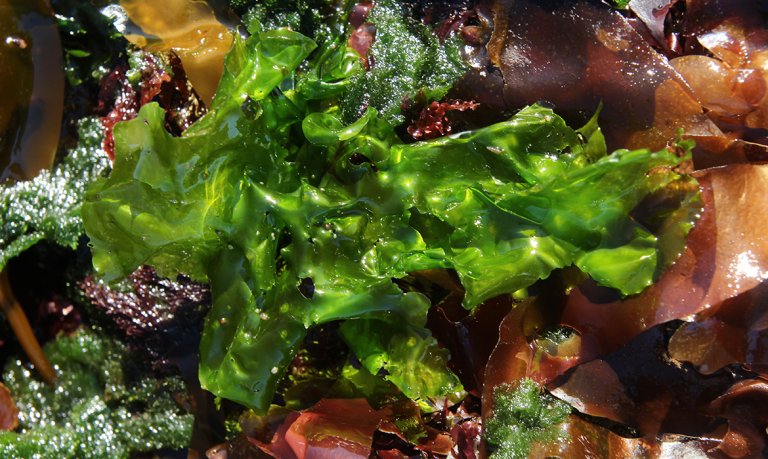
DULSE
Dulse (Palmaria palmata) is a macroalga in the group of red algae. The main leaf has several rounded leaf tips with two or three lobes, which make it resemble a hand or a palm. A binding disc holds the alga firmly on the rock or mountain. Dulse tolerates cold temperatures well and has a wide distribution in the northern hemisphere. It has a long history as both food and animal feed and is rich on vitamins, minerals, and protein. The taste depends on how it is prepared. When dried it tastes like liqourice and bacon, and when roasted it gets a nuttier taste.
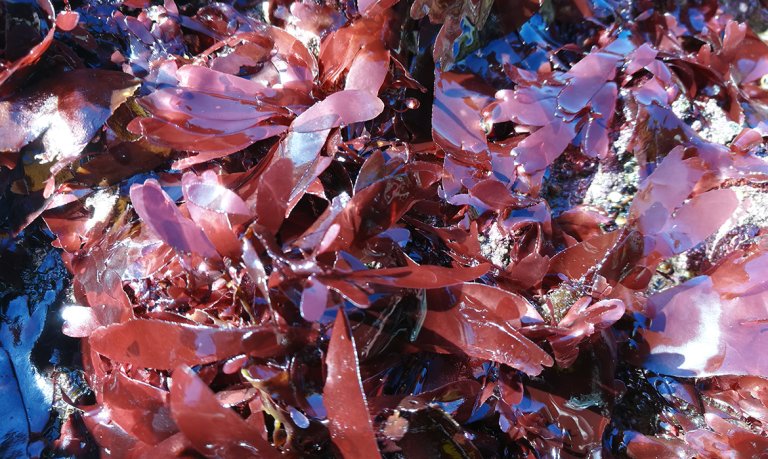
PURPLE LAVER / NORI
Purple laver (Porphyra umbilicalis) is a common red alga found along the entire Norwegian coast. The leaf grows from a navel-shaped attachment that sits on mussels or seaweed, hence the name "umbilicalis", which means "with a navel". Purple laver is rich on protein, vitamins, minerals and omega-3. In Great Britain and Ireland, purple laver is eaten in the traditional way, either fried or on and in bread. In Norway, it is best known as nori which is used in sushi. The alga has been cultivated in China and Japan for a long time, and projects have also been initiated to cultivate it in Norway. Purple laver has a mild flavour reminiscent of clams, oysters, and olives. When roasted, the flavour becomes nuttier.
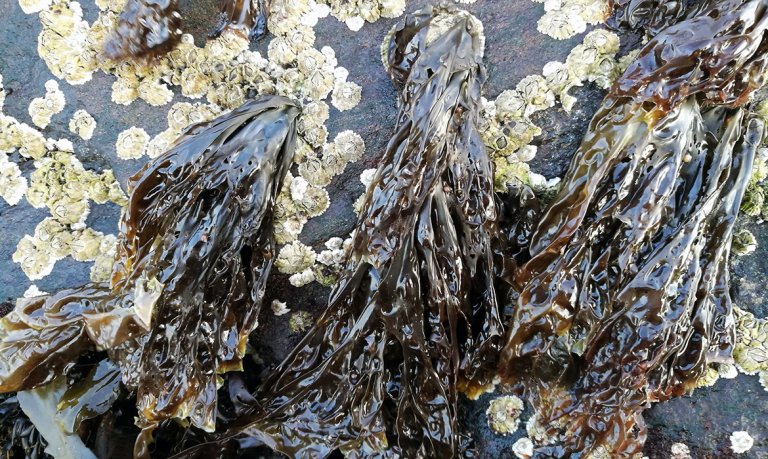
WRACK SIPHON WEED (TRUFFLE SEAWEED)
Wrack siphon weed (Vertebrata lanosa) is a small red alga that is special in several ways. This alga does not grow on rocks, but in symbiosis with and on the brown algae rockweed. It looks like dense, dark reddish-brown tufts of up to 7 cm. In Norway, it is found along the coast from Lindesnes to Nordkapp. Due to its characteristic taste and aroma, this alga is popular as a food alga in several countries. It is reminiscent of white truffles, combined with the slightly salty and mineral taste of oysters. Wrack siphon weed is therefore often called truffle seaweed. This alga is particularly rich on protein and contains the omega-3 fatty acid eicosapentaenoic acid (EPA), which is one of the fatty acids associated with beneficial health effects.
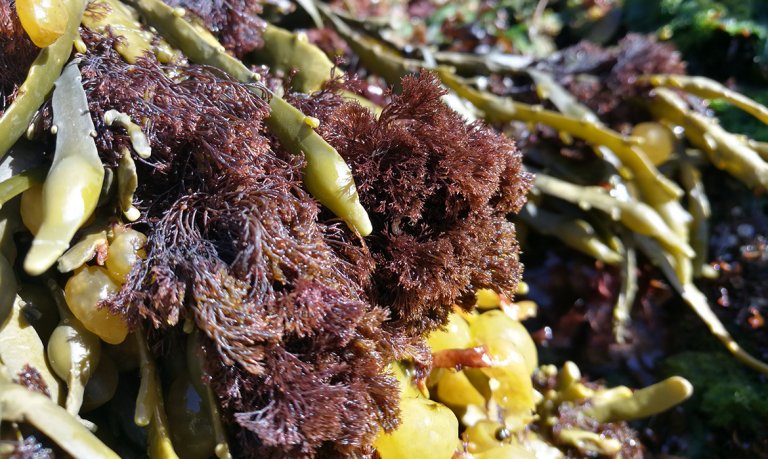
The brown algae you should be more careful with
Commercially, the brown algae sugar kelp and winged kelp have received a lot of attention in Norway. Still, researcher Hanne Mæhre believes that private harvesters should be more cautious when harvesting these algae, which is also recommended by the Norwegian Food Safety Authority. As we learn more about macroalgae and their content in Norway and Europe, we will probably receive more precise recommendations for the consumption of macroalgae.
WINGED KELP
Winged kelp (Alaria esculenta) is a brown alga. It is easily distinguished from other macroalgae by the fact that it is the only one with a central rib. This is an extension of the stem and grows for several years, while the lamellae that grow out of the central rib are newly formed every year. The stem sits on a strong attachment that anchors the alga firmly to the rock. The scientific name means "edible wings" and refers to the fact that the lamellae flap like wings under water. Winged kelp grows best in areas that are slightly exposed to the weather and cannot tolerate temperatures above 16°C. It is rich in protein, carbohydrates, minerals, and vitamins. The taste is sweet due to the sugar mannitol, and it has a mild taste of the sea. The species grows rapidly and is already established in commercial algae cultivation in Norway.
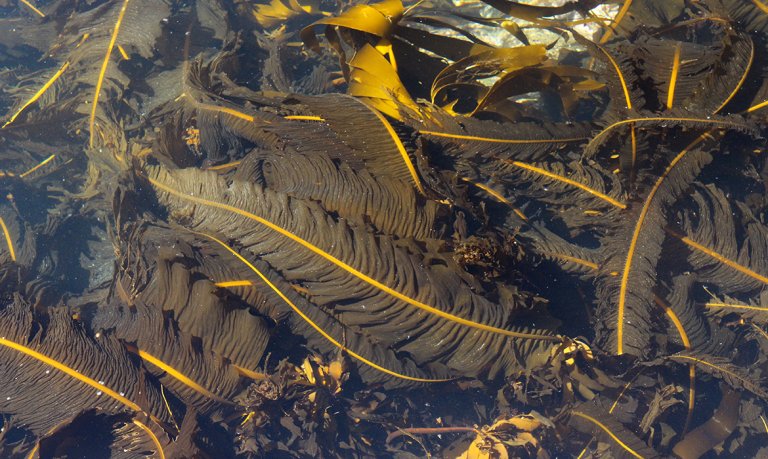
SUGAR KELP
Sugar kelp (Saccharina latissima) is probably one of Norway's best-known macroalgae. It is found along the entire Norwegian coast and is also in the initial phase of commercial cultivation. Sugar kelp gets its name from the sugar mannitol and the amino acid alanine, both of which taste sweet. Other flavours are mild umami, salt, fresh sea, and green vegetables. Like most brown algae, it is rich in alginate, which can be used as a thickener, stabilizer, and gelling agent. Sugar kelp has a relatively simple structure, with a small attachment that holds the kelp firmly to rocks, shells, or pebbles. The alga has a short and thin, flexible stem which ensures that it is not torn loose by waves. On the stem sits a ribbon-shaped yellow-brown leaf that is wavy at the edge and can be 2-4 meters long.
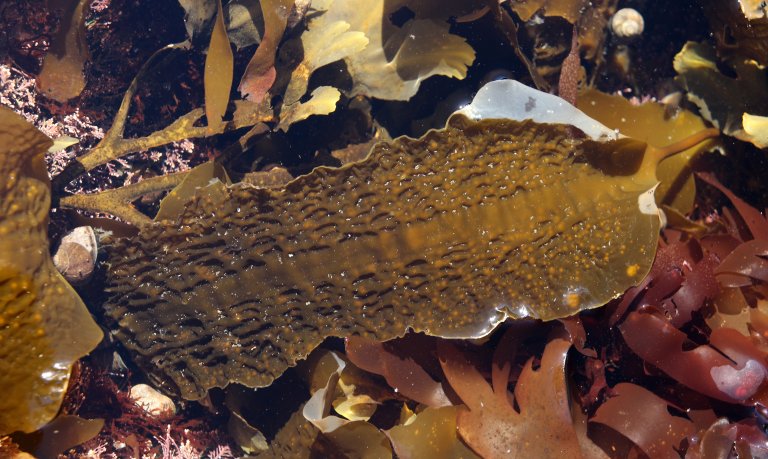
BLADDERWRACK
Bladderwrack (Fucus vesiculosus) is a brown alga that is easy to distinguish from other macroalgae. The flat leaves are olive green to brown, while the distinct midrib is a slightly lighter colour. On each side of the midrib are oval bladders, which are formed in pairs every year. Both the Norwegian, English, and Latin names refer to these bladders. Bladderwrack grows in large populations in tide water along the entire Norwegian coast. It is often found together with other seaweed species such as rockweed, toothed wrack (Fucus serratus) and spiral wrack (Fucus spiralis). Studies show that bladderwrack contains a lot of tannins, which have antioxidant properties. The taste of bladderwrack is described as mild umami, the aroma of toasted bread, sour and bitter.
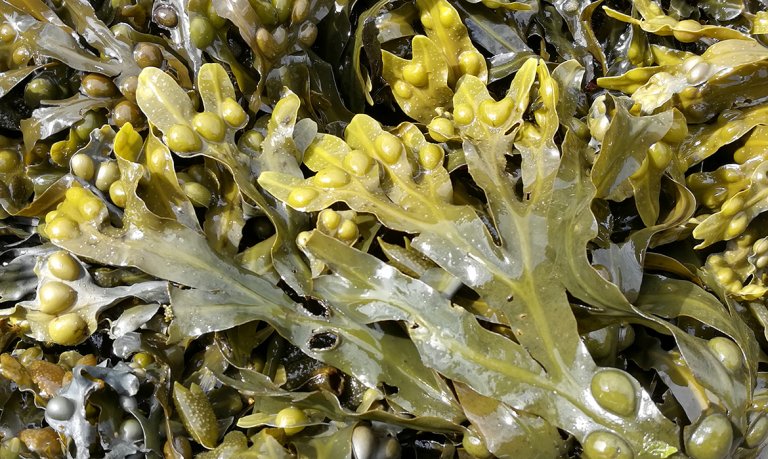
Contacts
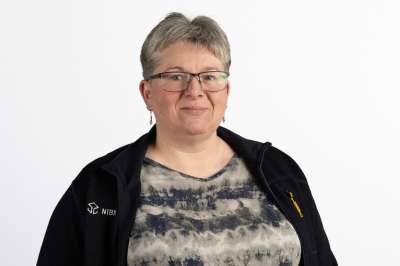
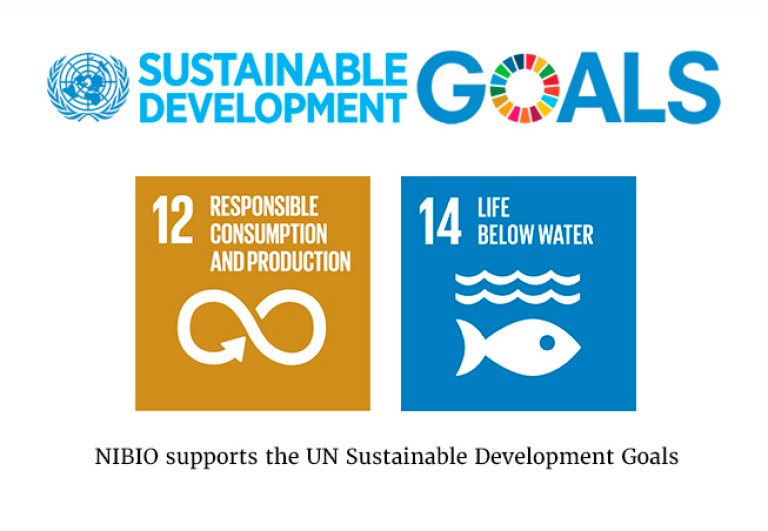
Pickled herring with algae
Traditional dish with a new twist. Pickled herring is made in the traditional way and pieces of fresh or dried dulse or bladderwrack are added. The herring is best if it is left in the fridge for a few days before use, and dulse gives a wonderful red colour.
2 dl vinegar 7%
3 dl sugar
4 dl water
Pepper, mustard seeds, cloves (you can use a bag of pickled herring spices from the store)
100 g of cured herring
33 g onion
5 - 10 g of dried dulse or bladderwrack
Cut or tear dried dulse or bladderwrack into small pieces. Use desired amount. Cut herring fillets and onions into suitable pieces.
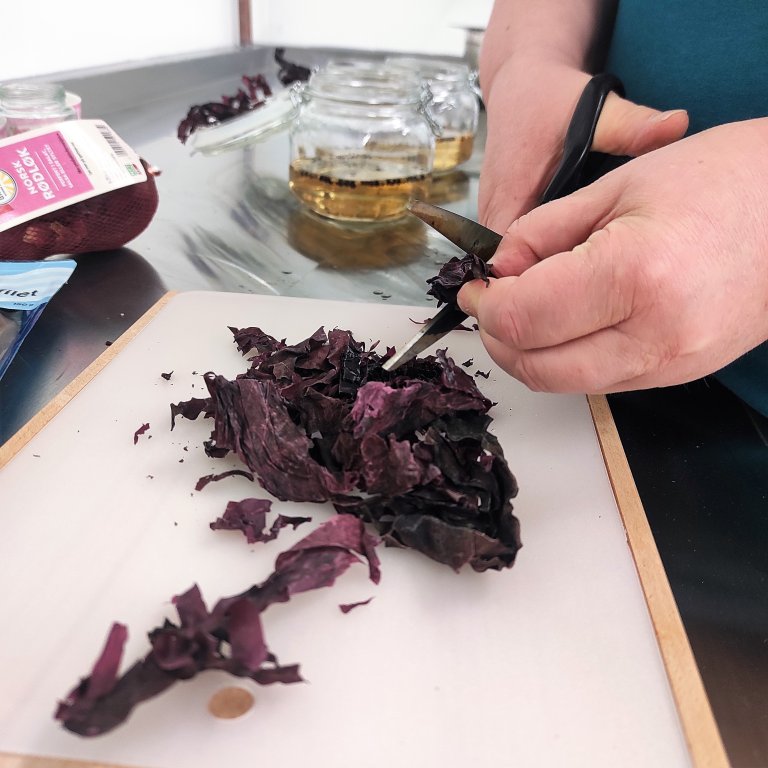

Vegan scones with nori
Quick scones, or tea cakes, are perfect for supper and are best while they are still slightly warm. The seaweed addition in this recipe is based on nori sheets that you can buy in most major grocery stores.
380 g wheat flour
9 g nori (3 large sheets)
35 g baking powder
A little salt
115 g frozen margarine
350 ml barista oat milk
20 ml lemon or lime juice
For the topping:
30 ml melted unsalted margarine
1-2 g nori (1/2 sheet)
APPROACH:
Preheat the oven to 230°C
Pour lemon/lime juice into oat milk, stir and leave for a few minutes, small lumps will form
Tear ½ nori sheet and add to melted margarine. Set aside in a warm place until ready to use
Mix the dry ingredients (flour, grated nori, baking powder, salt) in a bowl
Cut the frozen margarine into 3 cm cubes and add them to the flour mixture. Crumble the margarine into the flour until the "dough" is smooth. Add the oat milk and mix everything with your hands or a wooden spoon
Sprinkle flour on the baking table and pour the dough over it. Knead for 2-3 minutes until you have a firm ball. Roll out the dough into a rectangle and fold it into three parts. Roll out to a rectangle again and repeat the folding (this gives nice layers in the finished scones)
Roll out the dough until it is approx. 1-1.5 cm thick and punch out 6-7 cm round pieces (use a glass). Be careful not to twist the glass when you lift it up - this will prevent you from getting clear layers in the scones
Place the rounds on a baking tray covered with baking paper. Brush them with nori in melted butter (from point 3.) Bake the scones for 12-15 minutes until they are golden brown
Cool down and enjoy your scones (preferably warm) with butter and cheese
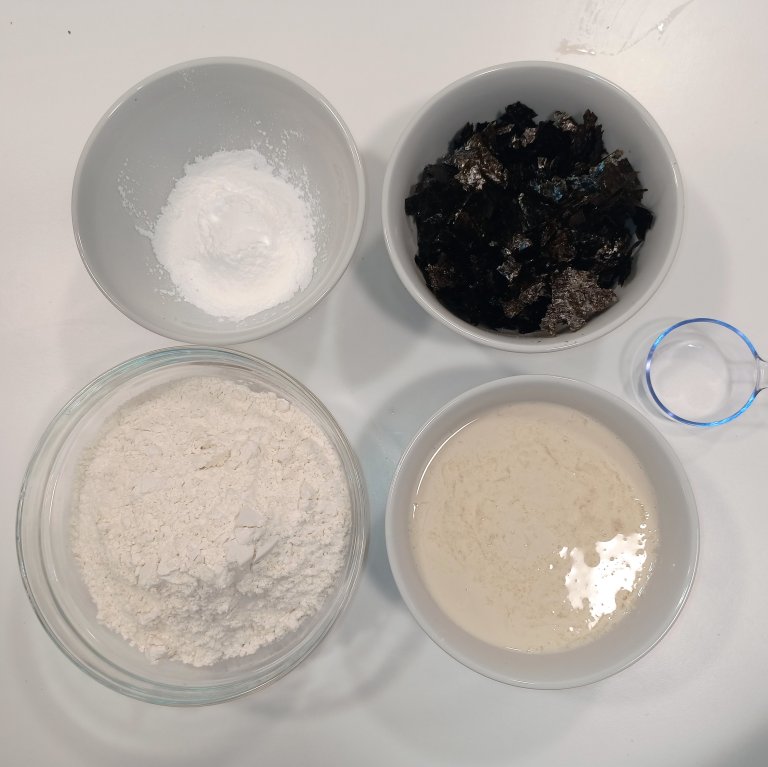
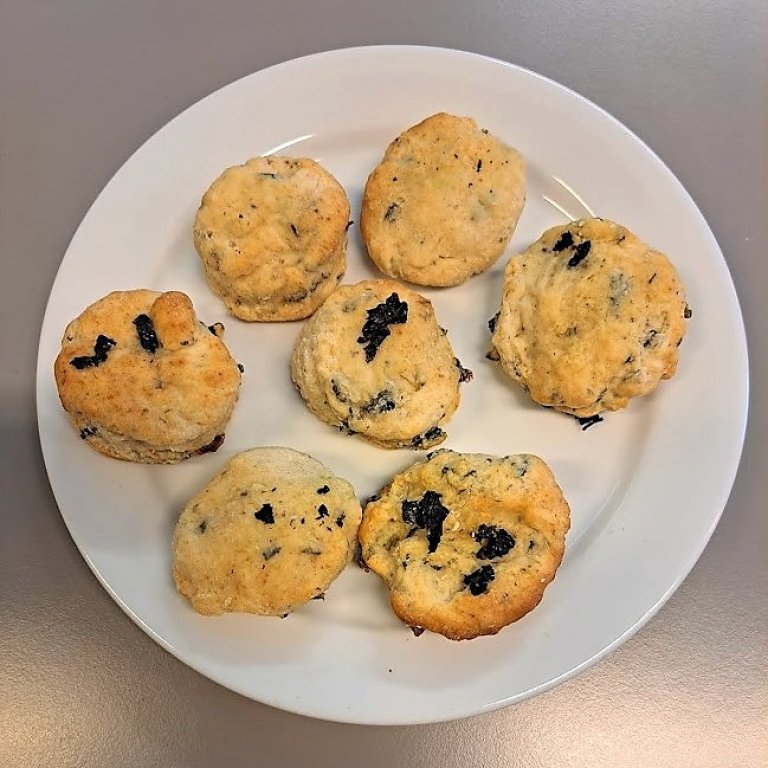
Contacts


